Illustration by Evgeny Gromov, Getty Images; animation by Brian McNamara, Detroit Free Press
Too many people are struggling in silence, dealing with depression and anxiety, living in darkness, unsure what is wrong or how to get help.
Too many young adults are killing themselves: Suicide is the second leading cause of death for college students.
Zachary Winston brought it back into the national spotlight when he died by suicide at Albion College.
Today, the Free Press is taking an in-depth look at college athletics and mental health, using sports to shed light on a national crisis. The Free Press found a wide disparity in how Michigan colleges handle mental health issues, and athletic administrators at several schools admitted they fear they aren’t doing enough. These administrators should be commended for their honesty because it is time to talk openly about this issue — to talk about what is working, as well as what is not. This isn’t about casting blame or pointing fingers, it’s about trying to isolate problems and highlight solutions. The stigma has to be broken. And it starts with education and unvarnished openness.
This isn’t an athletic issue. It’s a societal issue. Too many counseling centers are underfunded and understaffed. Too many don’t take this seriously until there is a crisis. And it’s too hard to get mental health care.
We must get to the point where an athlete going for mental health treatment is no different than getting treatment for a sprained ankle.
But it’s not just athletes, of course.
It’s all of us.
Here was a college football player, stuck in the shadows of his own mind, on the brink of a tragedy. His thoughts kept racing, obsessing about death and dying, unsure what was wrong or how to make it stop.
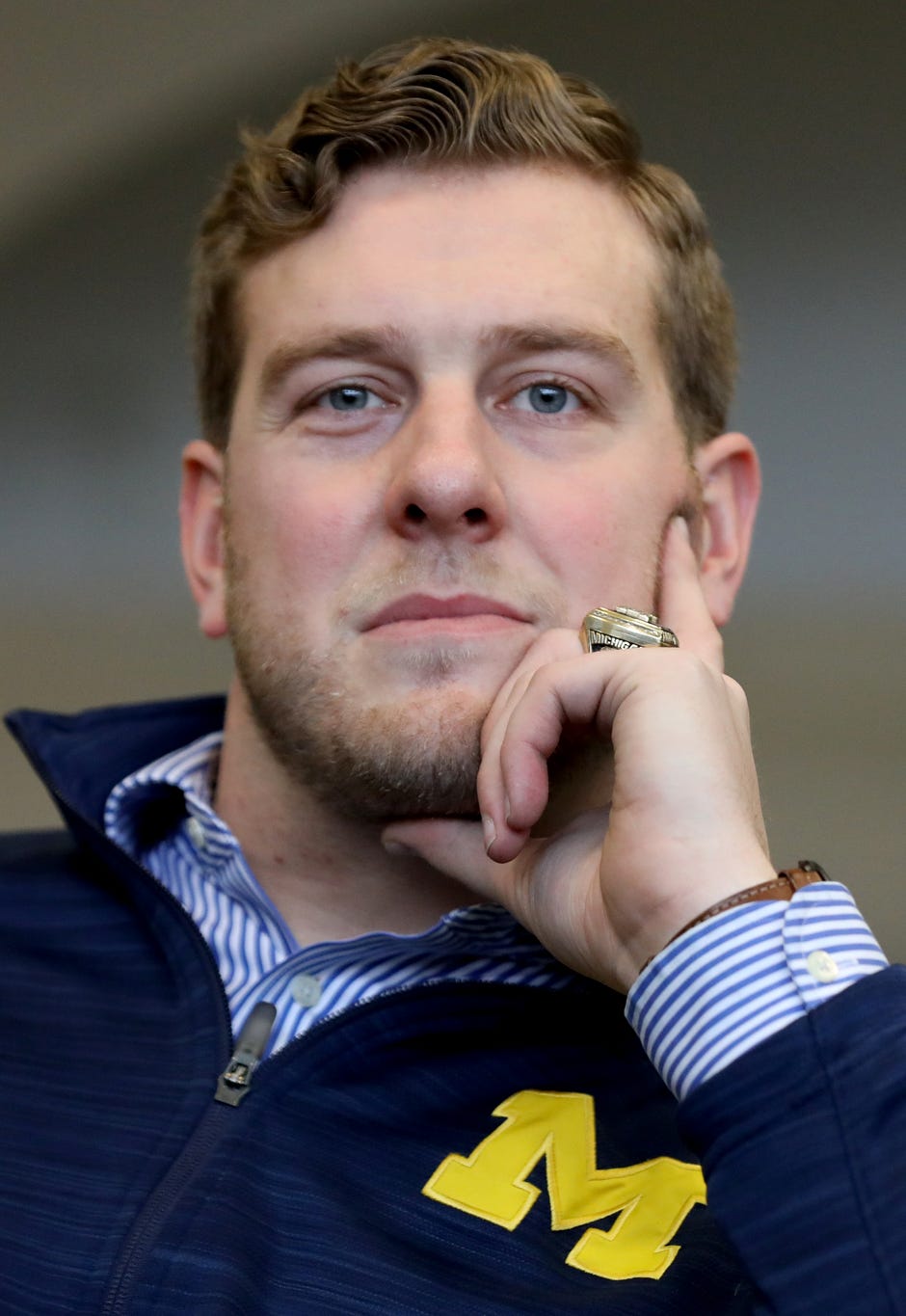
“I was in a dark place,” former Michigan football player Will Heininger said. “The days felt miserable and long. I had racing thoughts, all day, every day, every 5 seconds.”
Heininger had just finished his freshman year at Michigan in 2008. He felt alone and didn’t know where to get help. He could have been any athlete, at any school. Research shows that about 30% of all college athletes experience depression, according to the NCAA.
“I couldn’t imagine living another 50 years like that, let alone another year,” Heininger said.
Here was a small college on the cusp of a tragedy. It could have been any college, at any level.
Before Winston died by suicide, the subject of how to handle athletes experiencing mental health issues was raised at an Albion College athletic department staff meeting, according to a coach in the room.
It is a topic that all colleges, not just the athletic departments, are wrestling with: one out of every eight college students (13.3%) makes a suicide plan, according to National College Health Assessment. Research shows that 65.7% felt overwhelming anxiety and 45.1% felt so depressed that it was difficult to function, according to NCHA.
An Albion assistant coach asked athletic director Matt Arend whether the department would consider hiring a mental health professional to work with athletes, but Arend said no, according to the coach, who agreed to speak to the Free Press on condition of anonymity out of fear of retribution. An Albion College spokesperson said that is an “inaccurate” description of the staff meeting but would not elaborate.
Winston took his own life on Nov. 9.
[Zachary Winston's death and the lessons that came from it]
Most small schools say they can’t afford a mental health expert in their athletic department, even those spending millions on new facilities. Albion, which is undergoing a $5 million renovation of its athletic facilities, relies on its athletic trainers and coaches to spot warning signs before sending athletes to an on-campus counseling center, a policy shared by most small schools.
Here was a doctor at the NCAA, devastated by suicide but determined to do something.
Brian Hainline, the NCAA’s chief medical officer, made a bold statement after he was hired in 2013, calling mental health “the biggest issue” facing college athletics.
“I’ve lost a couple of people who I was exceptionally close to who died by suicide,” Hainline said. “And I’ve had three patients kill themselves and it devastates me, and it always will.”
The NCAA has raised awareness of suicide issues, issued best practices and guidelines and tried to get colleges to take this issue seriously.
But a Free Press examination of colleges across the state revealed a wide disparity in how athletic departments handle mental health issues. Some colleges have an extensive support network — the University of Michigan has a staff of seven mental health experts who work exclusively with its athletes. But other schools barely have anything. Some colleges didn’t start taking the issue seriously until one of their athletes faced a crisis. And some mental health programs have turned into a mishmash of procedures and practices.
Most small schools send athletes to on-campus counseling, but that is not an ideal situation. Many counselors don’t understand the unique challenges facing athletes, and it can be difficult for athletes to get an appointment to see a counselor or schedule regular sessions because of long wait lists and complicated athletic schedules. In addition, some athletes are uncomfortable going to a counseling center because of the stigma.
Every college does something different and no one is quite sure what is the best approach.
Several administrators told the Free Press that all of this uncertainty makes them live in fear that a tragedy is just around the corner.
“It scares the tar out of you,” Hope College athletic director Tim Schoonveld said. “That could be, literally, on any day of the week, any of us. That’s the scary deal. No matter what you are doing, it could be any of us. It’s out there and it’s everywhere.”
This isn’t just an athletic issue, it’s a public health crisis.But the more we talk about this, the more we look at how different groups are trying to combat it, the better we will be.
The hope
Here is an athlete, who came out of the darkness and was saved.
Heininger battled his demons in silence for several months until he broke down after a practice in 2008. But he was lucky when Lenny Navitskis, a Michigan trainer, saw the warning signs.
“He saw me and put his arm around me and said, ‘Will, come with me,’ ” Heininger said. “ ‘You are going to be OK. We will take care of you.’
“He walked me into Schembechler Hall and into Barb Hansen’s office, who I credit in a lot of ways for saving my life.”
Heininger got the help he needed from Hansen, now a retired athletics counselor, and learned skills that changed his life.
“After that point, I was thriving, utilizing those tools,” Heininger said.
Andhelped carry Lloyd Carr off the field, after his final game of the 2007 season.

There are several lessons in Heininger’s story. It is important to educate everyone in an athletic department — coaches, staff and administers — to spot warning signs. It is important for athletes to understand mental health issues are real. There is no shame in getting treatment for a sprained ankle and this shouldn’t be any different. There are tools to cope. No matter how bad it seems, it will get better.
The administrator
Here was the NCAA, putting a focus on mental health. But many athletes held an old-school mentality: "I’ll just tough it out."
The NCAA issued guidelines and best practices in 2016 but not every college implemented them. Some created a crisis plan but didn’t actually practice it. Only about 75% of Division 1 schools rehearsed emergency action plans and only about half of Division 2 and 3 schools had implemented them by 2017, according to the NCAA.
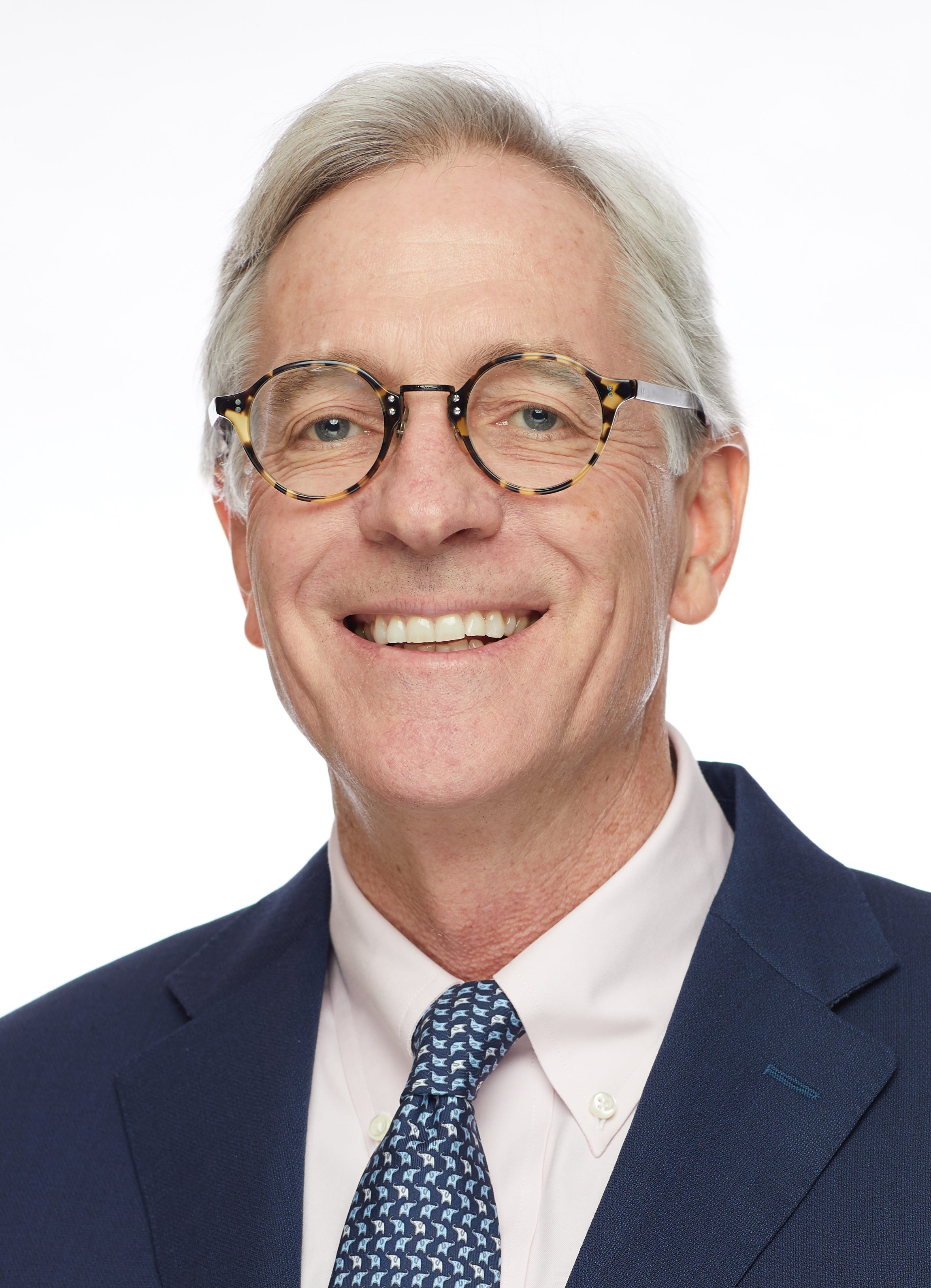
"That’s a striking gap when you think about it,” Hainline said. “We found the membership was having a hard time implementing it.”
The NCAA developed a mental health operational tool kit, a seven-hour program to try to bridge that gap.
The NCAA implemented a new rule in 2019, requiring all colleges to guarantee mental health services for its athletes. But Hainline acknowledges it is not a perfect solution. “It doesn’t address the fact that we have a shortage of mental health providers who actually have an expertise in sports medicine,” Hainline said.
Even though some schools send their athletes to on-campus counseling, there is no guarantee the counselors know how to deal with athletes, or even whether the athletes can get an appointment or routine care.
Springing into action
Here is some honesty, and that is important, because it’s time to be brutally honest about this subject.
Officials at several Michigan colleges admitted to the Free Press that they started taking mental health issues seriously only after an athlete faced a crisis. “A couple years ago, we didn’t have a lot of resources, or even a plan in case something happened,” Olivet athletic trainer Samantha Whiteman said.
An Olivet student faced a serious mental health crisis in fall 2018 but Olivet’s athletic department wasn’t prepared for it. “You don’t really know exactly how to deal with it,” Whiteman said.
But it sparked Olivet into action. “Our coaches expressed to us, ‘We don’t really know what to do if this situation comes up, or how to deal with it,’ ” Whiteman said.
Olivet held several informational sessions last spring to inform its coaches. “We thought that would help everybody get on the same page,” Whiteman said.
Olivet is a private, liberal arts college with 1,000 students. Last year, Olivet didn’t have an on-campus counselor. “We had some options in Battle Creek,” Whiteman said. “That was mainly it. It was a half-hour away. For a student without a car, that was difficult.”
But Olivet has added on-campus counselors for its student body, which athletes can use. “That has helped a ton,” Whiteman said. “If someone says they are having suicidal thoughts, but they are struggling, that’s who we try to push them toward, on-campus counselors. We’ve had a lot of success with them so far. … We are still in the process of getting things together, but we are doing a lot better at it.”
The athletic department at Calvin University, a private liberal arts institution in Grand Rapids, began to focus more on mental health after a student-athlete faced a serious mental health issue.
“I didn’t think a lot about it until I had an athlete who was suicidal,” said Calvin athletic trainer Kerri Clausen, who declined to say when that happened for privacy reasons. “It sparked, 'What are we doing and how do we do it appropriately?' ”
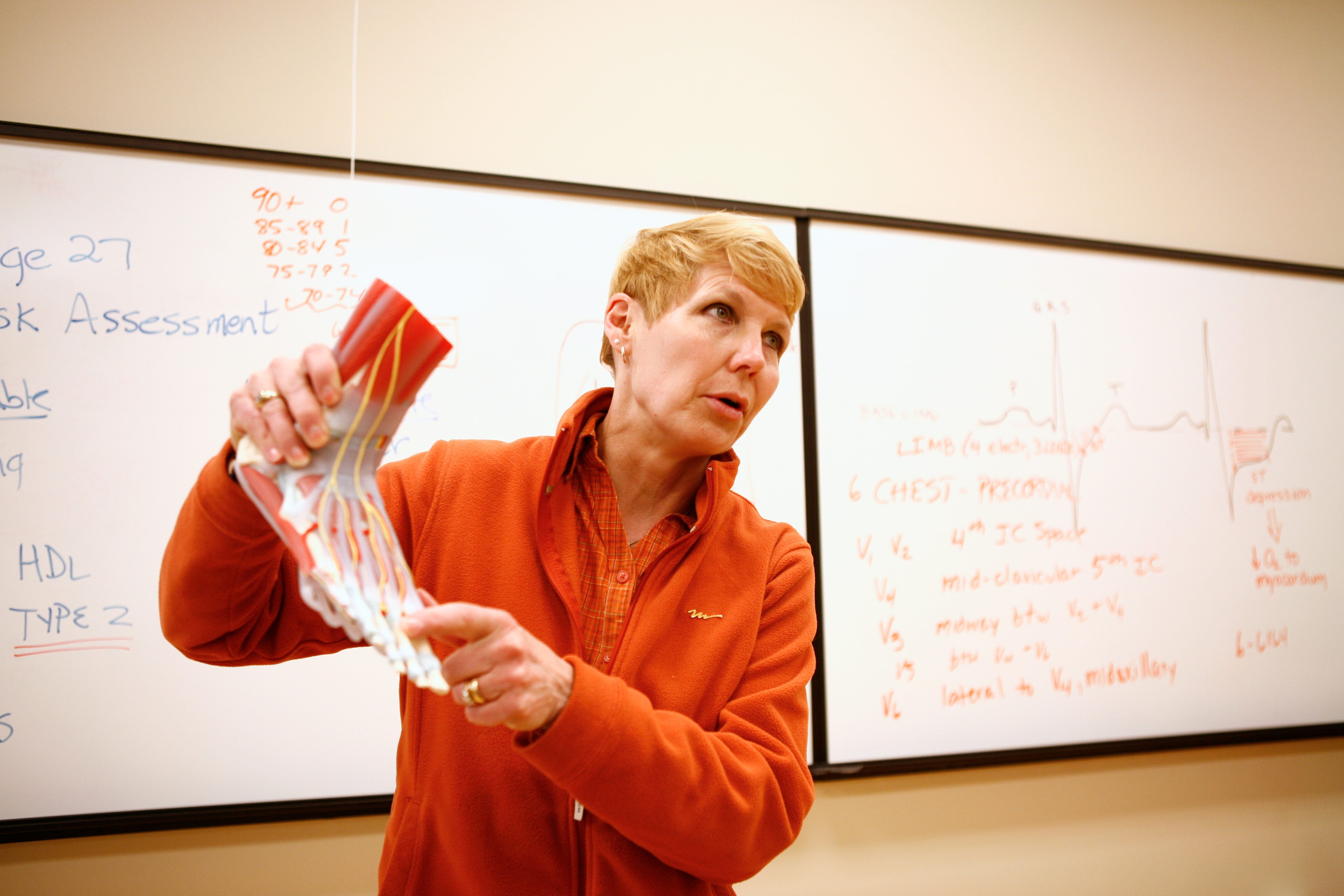
Clausen immersed herself in the subject and is now a strong advocate for educating student-athletes about mental health. She has created a brochure that lists warning signs and where to get help for Calvin athletes. She gives it to student-athletes and posts it in locker rooms. “People just don’t know,” Clausen said. “When you go to college, no one sits and tells you what is available to you.”
Dr. Irene Kraegel, who directs Calvin’s counseling center, talks to teams and at coaches’ meetings, trying to teach them warning signs and where to get help. “We do have a very strong on-campus counseling center,” Calvin senior associate athletic director Nancy Meyer said. “We also have several mental health facilities in town, for the serious cases. We have an on-campus psychologist. As well, because we are a Christian college, we have multiple chaplains, who all have had training in counseling. We feel like we are in a pretty good position.”
But Meyer said it is important to find counselors who understand athletes. “You can have a great counseling service," Meyer said, "but if they don’t understand athletes, and if they don’t understand the pressures they are under, then it’s actually not that beneficial.”
The NCAA requires institutions to identify someone on staff to be the point person with mental health concerns. At small schools, that is often athletic trainers, which makes sense because they are often more tied in with athletes than the coaches because they spend so much time together.
But many trainers complain that they need more training.
Several schools have gotten creative with how they try to deal with this issue. Michigan State has the Green Bandanna Project. Fifty student athletes are awareness/peer advocates. They tie a green bandanna to their backpack so that others know they can approach them for assistance, and MSU has has doubled the amount of hours psychiatrists are available to our student-athletes every week.
Gretchen Goodman, a former athletic trainer, is now the head of Grand Valley State's mental health program for athletes, one of the few Division 2 schools to have an in-house program. Goodman created a website with tips and resources, started doing monthly presentations and sends out tips on Instagram and Twitter. She is trying to reach student-athletes in different ways, using peer-to-peer interaction and video clips of athletes telling their stories. “There is a lot of power when a student-athlete is telling other student-athletes, ‘Hey, I’ve gone through something similar,’ ” she said. “We are trying to be preventative. You never know when the person sitting next to you on the bench is going to be going through something and you need to be there for them.”
The fear
Here is a man, who can view this issue through several points of view — with the insight of a former player, the compassion of a parent and the global view of an athletic director.
Hope College athletic director Tim Schoonveld was a star basketball player at Hope and now his daughter, Kenedy, plays women’s basketball at Hope.
“It’s scary right now for kids, the anxiety and depression and mental health issues,” Schoonveld said. “It’s so far beyond what it has been.”
That has Schoonveld wishing he could hire a full-time mental health expert for his athletic department.
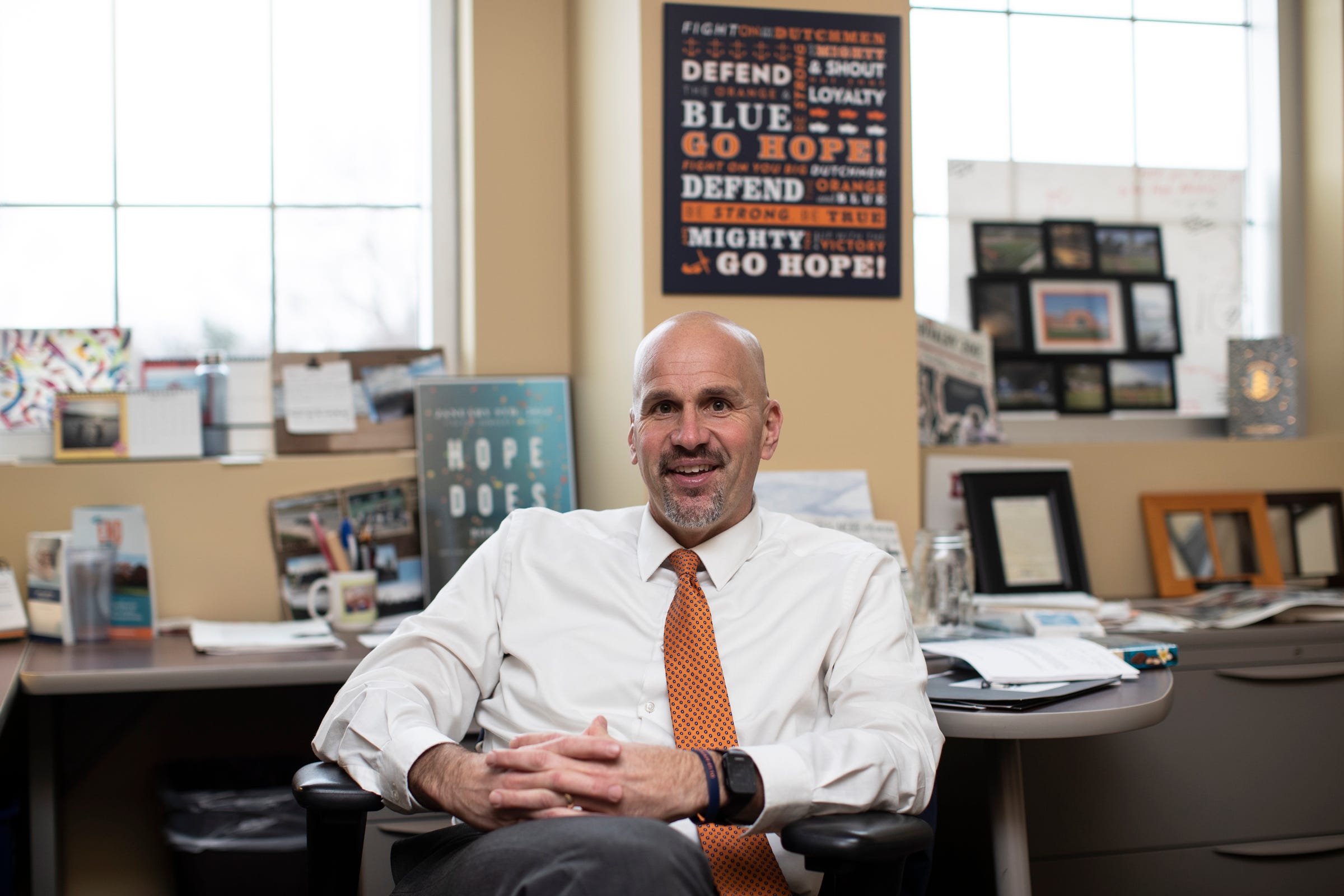
“If you said to me, ‘Hey, what is a top priority for Hope athletics?’ ” Schoonveld said. “I would say, ‘We need to find a way to fund somebody who would be a mental health professional who could work with our teams on a consistent basis.’
“Right now, our counseling center is great, but they are more reactive than they are proactive. Just because of time and number of people. Sometimes, it takes a week or two to get in to counseling.”
Recently, a Hope athlete faced a mental health crisis and Schoonveld tried to find help outside the college. Even that proved difficult. “There is so much need," he said. "Our goal is to find somebody who can proactively work with our teams.”
Hope has focused on mental health issues, in part, because it has dealt with several athletes who have experienced a range of issues.
A year ago, Hope gave its prestigious Courage Award to a women’s soccer player who had attempted suicide 1½ years earlier.
It is courageous for athletes to tell their stories, but also incredibly important. Athletes will listen to other athletes.
Finding holes
Here is an entire conference, admitting nothing is perfect and trying to figure this out.
The MIAA is holding a mental health symposium for its member schools on Feb. 25 at Adrian College, which was scheduled before Winston’s death. The schools will go over NCAA best practices and evaluate what they might be missing.
“What do you have?” said Meg Sharp, Adrian’s assistant athletic trainer. "What do you not have? Where are the holes?"
The schools share some of the creative ways they are trying to get students informed. Adrian created a sticker with a QR code that has been placed around campus. “It says, ‘Need a helping paw, scan here for confidential resources,’ ” Sharp said. “I thought it was a simple, easy way to get it out there. I think flooding it on your campus, making everyone aware that we are all kind of talking about it, has helped our campus.”
Several schools use different slogans to reinforce different points.
“It’s OK to ask for help,” Sharp said. “It’s letting them know this is nothing to be afraid of or ashamed of. It’s OK not to be OK. I feel like I say that three times a day, for athletic injuries as well as mental health.”
Hope College has something similar, according to football coach Peter Stuursma.
“We also use the slogan ‘See something, say something’ a lot, with our team, to reinforce the opportunity to provide support and or seek help for teammates who appear to be struggling,” Stuursma said.
The Mid-American Conference, which includes Central Michigan, Eastern Michigan and Western Michigan, was one of the first conferences to implement a comprehensive league-wide program on mental health.
“The education part is the biggest part of it, and it’s not just the student-athletes, it’s the coaches and administrators,” MAC commissioner Dr. Jon Steinbrecher said. “It’s having a sense of commitment and buy-in, that we are about the total student. It’s the Latin phrase, ‘Mens sana in corpore sano.’ A sound mind in a sound body.”
New strategies
Here is a psychiatrist, who is passionate about mental health concerns because it is so personal to him.
“My mother attempted suicide when I was in medical school,” says Dr. Rahul Mehra, a psychiatrist, who moderated a panel discussion on mental health at the NCAA Convention in January in Anaheim, California. “Decision makers and board of trustees, unless you have been exposed to a family member with mental health issues, you have no clue about this.”
While many athletic departments send their athletes to on-campus counseling centers, Mehra sees a gaping hole in the strategy. “The national trend is, counseling centers at colleges across the country are understaffed and under-resourced,” said Mehra, the CEO and chief physician of the National Center for Performance Health, based in Tampa.
But Mehra says he has found a way. He runs a company that offers video counseling to athletes.
“Suicide doesn’t conveniently happen between the hours of 8 and 5 p.m.,” he said. “It happens between the hours of midnight and 6 a.m., when resources are least available. … These college administrators, athletic directors, college presidents and the college board of trustees are not hearing these messages. There are well-meaning people, but they don’t know where to begin. This problem seems so enormous for them. But I say, begin somewhere, with something.”
Albion
Here is a college, still grieving the loss of an athlete.
Albion is not alone. Several colleges have had to deal with athletes who took their lives. No school is safe or has a foolproof plan. But it would be a tragic missed opportunity atop a human tragedy if we didn't find lessons in every situation or try to deal with these issues with complete transparency.
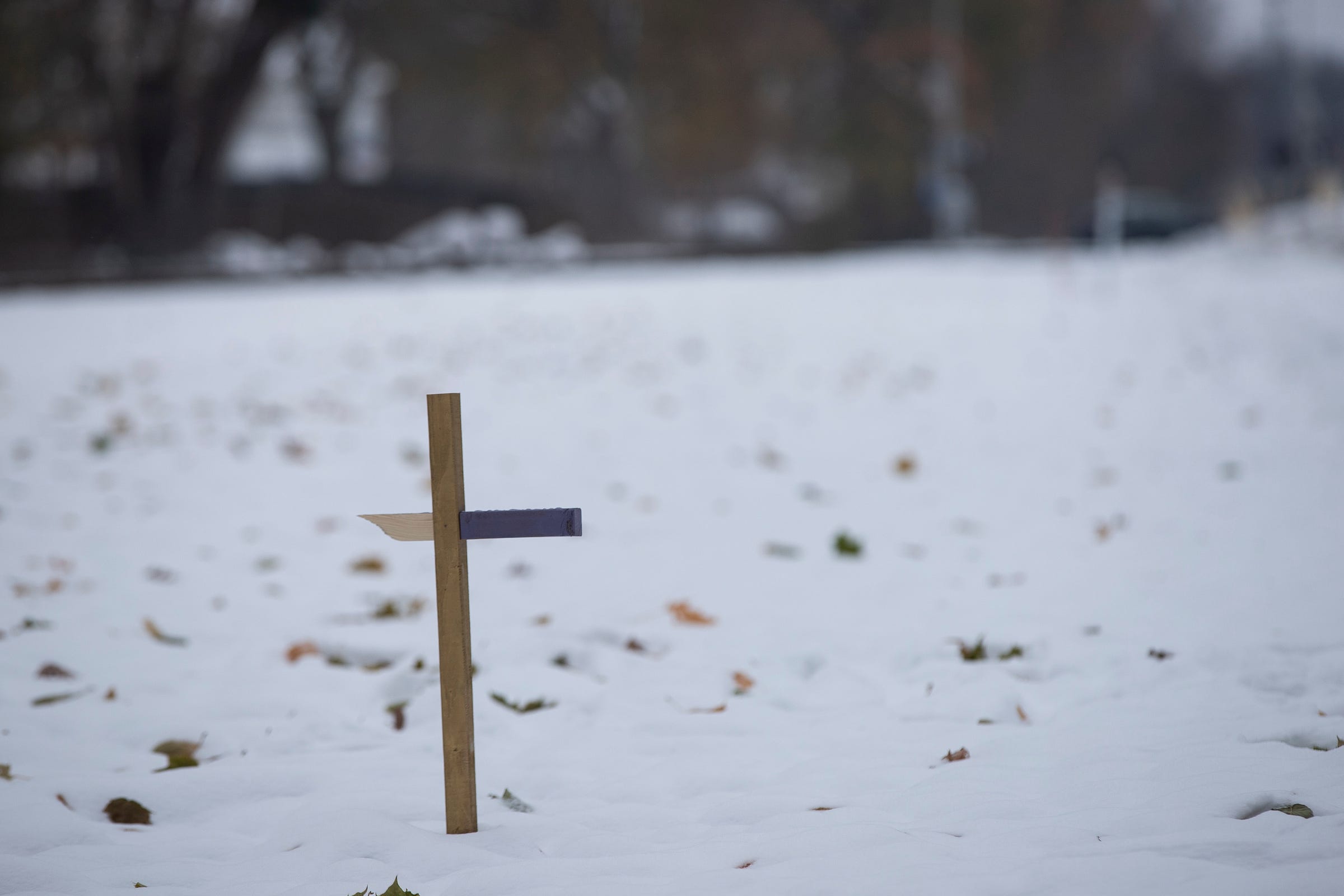
An Albion coach grew frustrated and told the Free Press that the Albion administration did not give coaches clear direction or advice on how to deal with athletes who were struggling with mental health issues before Winston’s death, other than advising the athletes to call security.
“The information you shared is inaccurate as often is the case with information from anonymous sources,” Chuck Carlson, Albion Director of Communications and Media Relations, wrote in a response.
Carlson declined to elaborate what was inaccurate, and he denied repeated requests to talk to members of Albion's athletic department. “We have established protocols to identify and respond to student-athletes who may be experiencing mental health issues,” Carlson wrote.
There is a wide gap between the coach's version and Carlson's statement.
Carlson said Albion’s 600 student-athletes have access to on-campus counseling services. He laid out several things Albion does, following NCAA guidelines, from screening new student-athletes to training members of the athletic department to identify and respond to student-athletes who show signs and symptoms of mental health issues. The training includes “walking a student-athlete to Counseling Services,” according to Carlson.
“The health and well-being of our student-athletes is at the forefront of every decision we make,” Carlson wrote.
There is no indication that Albion could have done anything differently to prevent Winston’s death. But if one coach doesn’t know what to do in a crisis, as the source told the Free Press, there is more work to be done. Clearly, having policies isn't enough. And crisis action plans have to be practiced. And it is important for all of us to talk about these complicated issues, in honest ways, so that everybody can help each other.
The key is prevention
Here is a former athlete, now working to save lives.
Heininger works for Athletes Connected, a collaboration between the U-M School of Public Health, Depression Center, and Athletic Department — a program that started with a $50,000 grant from the NCAA. The department has seven counselors, who deal with mental health issues for Michigan athletes, ranging from sports performances to anxiety and depression.
Heininger works with middle school students to college athletes, giving the same message to everyone: “No matter how bad it is, you are not alone. There are millions of people who experience mental health issues. I make sure they know treatment works and to know it is a real illness.”
Sometimes, students ask him whether he considered suicide. He never did, but he was fixated on death.
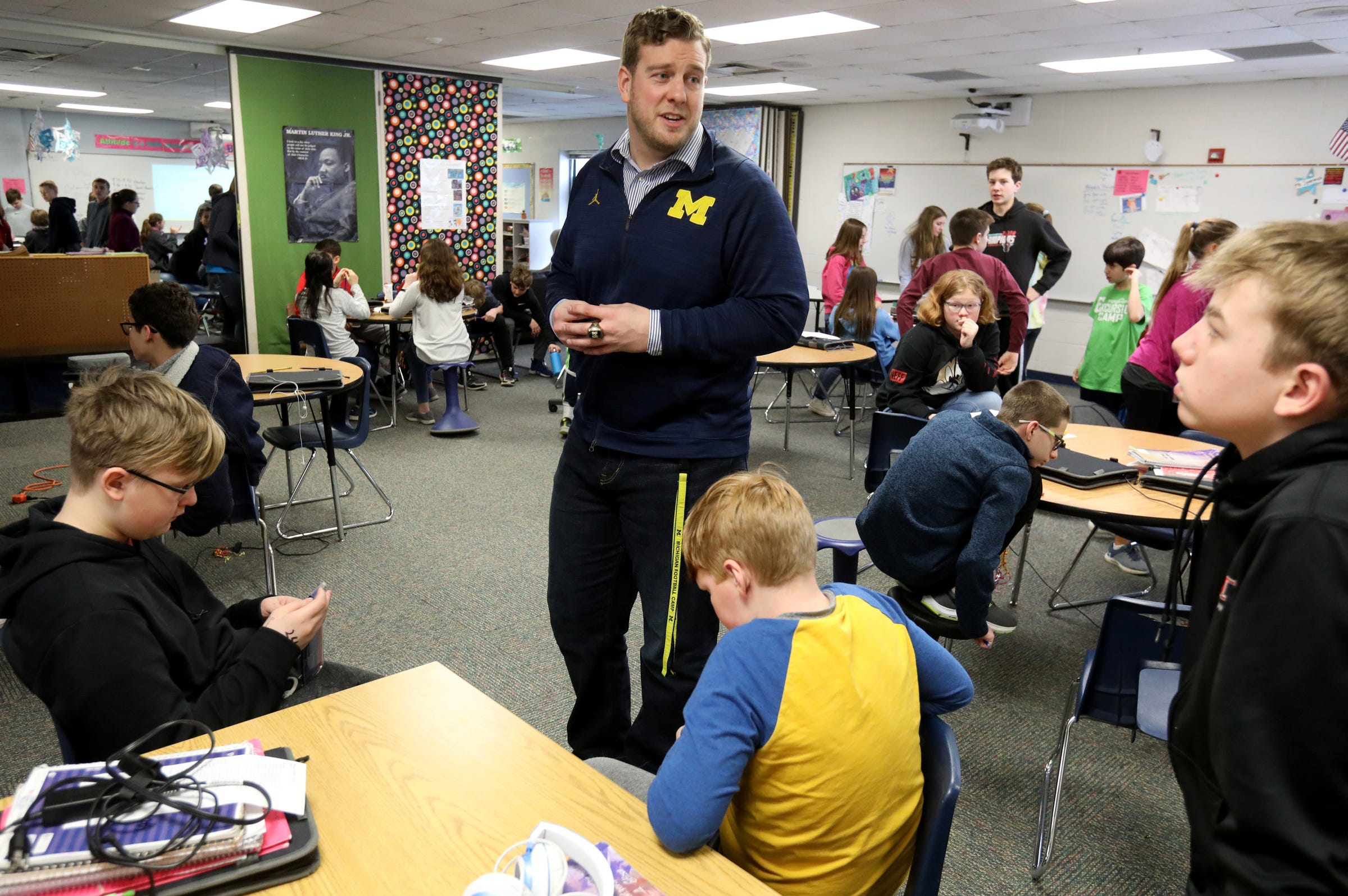
“I say, 'I understand to think that it’s not worth it to be alive anymore and what a scary place that is to be,’ ” he said. “If you ever feel anywhere close to that, just tell somebody. Please, tell somebody who loves you, somebody you love. I tell them, ‘I promise you will get better. You won’t always feel the way you do. And secondly, if you are in that space, you probably don’t believe me right now but that’s what it does to you. I’ve been there.’ ”
For too long, mental health has focused on the crisis situation.
But the key is prevention.
“How can we reduce stress up front?” Heininger said. “How can we educate better, to help students become experts themselves. That’s when you have really done your work, when they are able to utilize the tools you have taught them and they can navigate whatever comes their way and if not, they know who to ask.”
This issue has so many layers, so many faces. But one message should be repeated above everything else: Education is the key. Mental health issues have to be normalized. Plans have to be in place and practiced. And we have to figure out a way to make it easier for everyone to get help. Because there is hope. There is a way out. And no matter how bad things might seem, it will get better.
Contact Jeff Seidel: jseidel@freepress.com. Follow him on Twitter @seideljeff. To read his recent columns, go to freep.com/sports/jeff-seidel/.
How to get help
The National Suicide Prevention Lifeline can be reached at 800-273-8255. It provides 24/7, free and confidential support for people in distress, prevention and crisis resources for you or your loved ones, and best practices for professionals.